Rayonier Forest Engineer III, Colton Cooley, shares his personal experience as an AgForestry Leadership Program participant. The program is designed to cultivate leaders within Washington State who work in the agriculture, forestry, and natural resource industries.
Colton Cooley grew up in a small forestry town in Oregon. With generations of family-owned logging and tree farming businesses, a career in forestry was a natural choice. His love for the industry led him to Rayonier as a Forest Engineer III.
After receiving a sponsorship from Rayonier, Colton took the leap and was chosen as a participant in the highly competitive AgForestry Leadership Program. He graduated in April 2022.
The intensive 18-month leadership development program is geared toward those who work in the agriculture, forestry and natural resource industries. During his time in the program, Colton says it was both a life-changing and eye-opening experience.
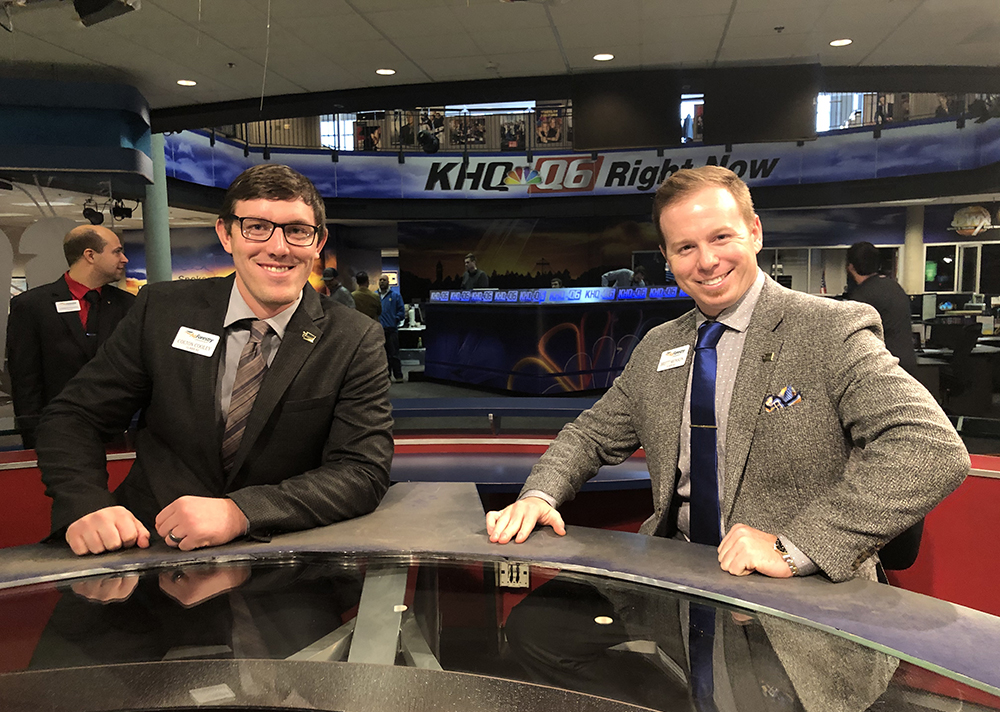
About the AgForestry Leadership Program in Washington State
According to Program Director Hannah Poush, the program provides an opportunity for individuals to focus on themselves as a leader.
“The AgForestry Leadership Program prepares mid-level career adults with practical leadership opportunities and rounds them with a support network,” explains Hannah. “From there, they can take the leadership skills they gain and put them to use. Leadership can be messy and lonely at times. You need people in your corner who aren’t necessarily in your organization. Our program provides a safe space where participants can mold and perfect their leadership skills prior to taking it out into the world.”
The program is divided into three modules, each focusing on a specific leadership-focused topic.
Module One – Personal Leadership
In this module, participants are challenged to rethink assumptions and consider what their individual leadership philosophy is. They are asked to self-evaluate who they are and who they want to become as a leader.
“One of my favorite moments was when Colton got up to give his speech,” says Hannah. “He told the room to ‘do the things that make you uncomfortable.’ Clearly, he was not comfortable giving a speech, and he even told the room that. But he did it anyway. Colton lives what he preaches, and that is what is so special about him.”
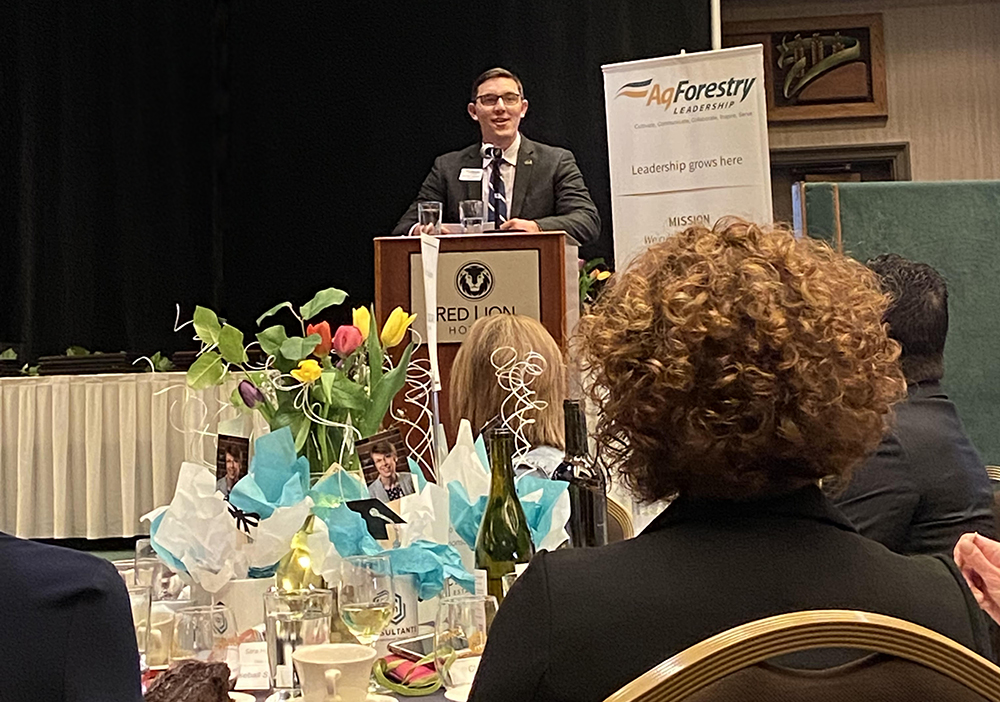
Assignments and seminars during Module One include:
- Attend 3 Seminars (in Pullman, Spokane and Wenatchee)
- LPI 360 Assessment
- DiSC Personality Profile
- 5-minute persuasive speech
- Assigned reading
- Required journaling
Module Two – Leadership in Public Policy
The primary goal of Module Two is to immerse program participants in the public policy culture and history at the local, state, and federal government levels. Class members visit three different locations during this module, gaining a more diverse perspective as it applies to leadership within government.
“Many program alums will tell you that this was one of their big ‘ah-ha’ moments,” says Hannah. “They learn that the public policy sector is not an untouchable process. It offers empowerment and the realization that anyone can be involved in the issues and challenges surrounding policy-making.”
While visiting Washington D.C., Colton met with Congresswoman Kim Schrier.
“Colton absolutely shone,” Hannah says with a smile. “This was when he really started stepping out of his box and realized his ability and confidence in speaking. I remember him walking through that experience of his abilities. Kim genuinely wanted to learn from him. His classmates commented on how well he did in that meeting.”
Assignments and seminars during Module Two include:
- Attend 3 Seminars (in Seattle, Olympia and Washington D.C.)
- Required journaling
- Assigned articles and podcasts prior to seminars
- Begin working on group policy projects
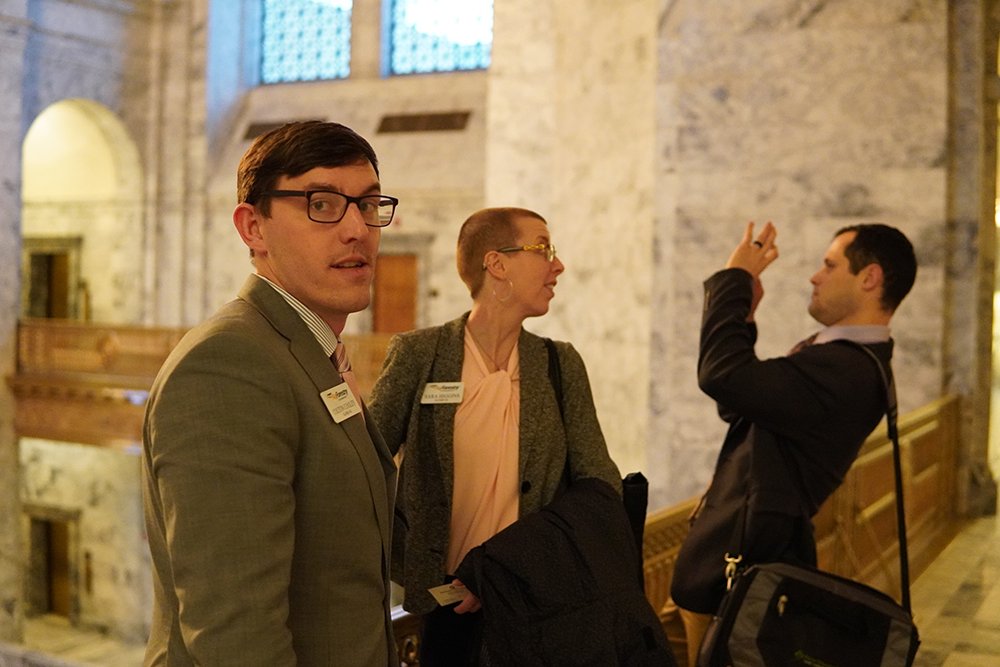
Module Three – Leadership and Systems Thinking
During Module Three, participants travel and are exposed to various issues prominent within the state of Washington.
“We want class members to be exposed to regions of the state and become familiar with issues we face,” says Hannah. “With issues that are contentious, we want to offer opportunities to understand various and diverse perspectives. Our hope is class members gain an appreciation for these complexities.”
Social issues, transportation systems, forest products, and key water systems are among the topics discussed and observed during Module Three.
In addition to state-level travel, class members must embark on an international trip. Colton spent two weeks in Puerto Rico, where he immersed himself in the culture and got to know the people there.
“It was inspiring to hear their stories,” Colton explains. “Despite all they had been through with the hurricanes and earthquakes, the people held so much pride for their country.”
Assignments and seminars during Module Three include:
- Attend 6 Seminars (In Longview, Tri-Cities, Vancouver, Tacoma, Walla Walla and an international location)
- Required journaling
- Assigned articles and podcasts prior to seminars
- 5-minute persuasive speech
- Continue work on group policy projects
- Begin work on personal leadership philosophy
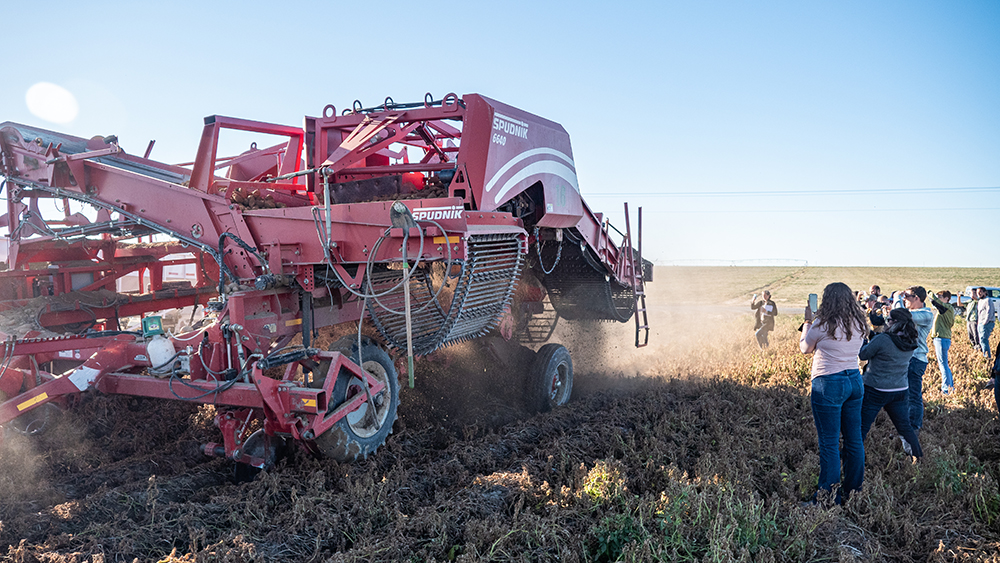
The History of the AgForestry Leadership Program
In the ‘60s and ‘70s, times were unsettling as the Washington “Fish Wars” took place. Native American tribes and commercial fishing industries were at odds over fishing land. From this turmoil, tribal elder Billy Frank Jr. and an Ellensburg rancher-turned-politician, Stu Bledsoe, forged a relationship and decided to find a way to work together. This ultimately led to the Timber/Fish/Wildlife Agreement (TFW) in the 1980s. The agreement laid the foundation for the collaborative management of natural resources between organizations, tribes and agencies in the state of Washington.
While working on TFW, Stu saw the need for quality leadership between industry and public policy. From his desire to grow leaders who could collaborate and communicate, a natural resources leadership program was born in Washington State – the AgForestry Leadership Program.
Colton’s AgForestry Experience Testimonial
We asked Colton about his experience with the AgForestry Leadership Program.
Rayonier: How would you describe your experience working through the AgForestry Leadership Program?
Colton: My life has changed thanks to the program. I gained a new perspective on leadership and now have the confidence to speak up and share in my role at Rayonier. Before coming to the program, I had no political experience or any interest in it. Part of the program is teaching its participants how laws are passed and enforced. I learned that our legislators are just people that want to make a difference. They are easy to talk to if you reach out.
During my time in the program, I was expected to attend all seminars, give my full attention, and participate equally in our group projects. The intensity of the program was tough, don’t get me wrong. I had to work around the challenges of managing time with my family, work and the program. But you get out of the program what you put into it.
And as for my classmates, they were an awesome group of people. Everyone, at some point, was a mentor for each other. It went both ways. I was humbled to be with such a quality group of people. And the best part is, we stay in touch. I met some of my best friends through the program.
R: What part of the program left the biggest impression on you?
CC: There were many experiences that left an impression on me. But one of the big ah-ha moments was when we visited the state penitentiary in Walla Walla, Washington. Part of the process is learning that there are issues outside of your professional life. We attended a Crime and Corrections Seminar, hearing from professionals in the corrections industry talk about issues with the system in Washington state. They spoke about what the state does for the system and how it runs. It was eye-opening to learn how that actually affects us because the people within the penitentiary eventually get out and become our neighbors. So the question then is what do we do to productively help get those people back into society? We were consistently faced with challenging questions that got us thinking.
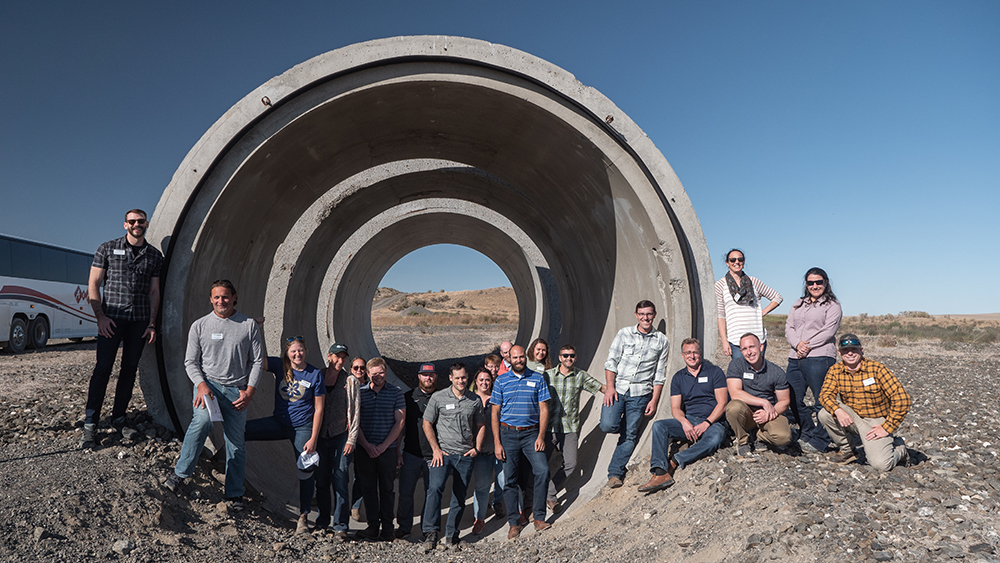
R: How has the AgForestry Leadership Program helped set you up for success in your role at Rayonier?
CC: When I expressed interest in the program, Rayonier was very supportive. They want you to grow as an employee for their organization, but also as a leader and community member. Because of their support and my involvement in the program, I’ve gained the confidence to sit in a meeting and share my thoughts and opinions with the room. I also better understand how I learn and communicate with others. These are all critical skills to becoming a better leader.
After sharing my experience with my supervisor and co-workers at Rayonier, the company has been getting more involved with the AgForestry Leadership Program. Rayonier strives to challenge its employees with professional development, and I think they saw that this program benefited me.
R: Tell us about the forestry tour you personally organized for your class.
CC: Our class, unfortunately, went through the program during the pandemic. Because of this, we missed out on field tours, one of which would have highlighted the forestry side of the industry. I wanted to showcase forestry and share the industry with those who do not work in that space. So I reached out to Hannah Poush, our Program Director, and asked her if I could organize a forestry tour. She didn’t hesitate before she said “Yes!” I reached out to several people in the industry that I knew were alumni of the program and received huge support from the network. In March of 2022, we went on a tour of a seedling nursery, a mill in the area, and an export facility at the Olympia Court.
It just goes to show how powerful the forestry network is.
R: What was your AgForestry group’s public policy project?
CC: As a group, we wanted to do something that would make an impact. We all got along well, but we had different viewpoints and ideas. We knew we wanted to make a difference and landed on the issue of insurance. Many farmers do not have the same access to doctors as people in most cities. In addition, their [often rural] internet access typically is not fast enough for online medical visits. An emergency order that was meant to help had been issued by the governor during COVID, however “audio-only” services were excluded from reimbursable telemedicine services.
We got traction very quickly! Each group member spent time reaching out to individuals for support, and one even submitted a written testimony. Through it all, we learned how to track the bill through the legislature and how the process works. Afterward, we wrote a report for the bill and presented it at the graduation seminar. We received positive and constructive feedback. It was a satisfying and empowering experience.
R: What advice do you have for someone considering the program?
CC: My advice would be to do your research. This program isn’t something to be taken lightly as it requires quite a bit of time and commitment. Figuring out how to juggle life, family, work and the program was the most challenging part for me. Those new to the program need to consider this and answer the question, ‘Can I handle that?’ You only get out of the program what you put into it. Dedicate yourself and you’ll do just fine.
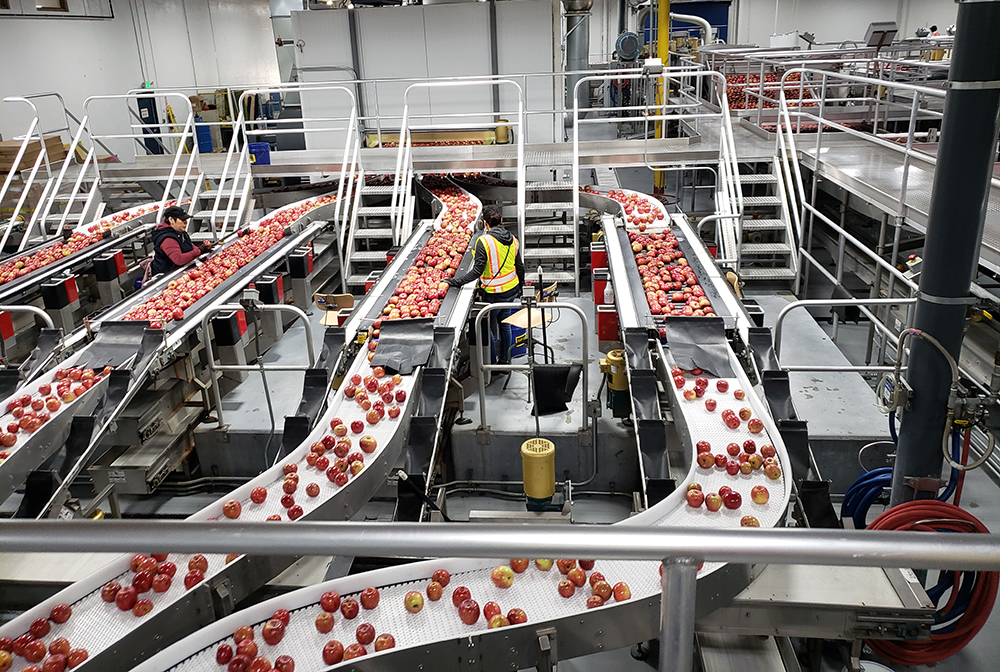
Rayonier’s involvement with the AgForestry Leadership Program
Because of this opportunity, Colton has gained the confidence he needs to succeed in his role at Rayonier.
“I am grateful to Rayonier and thankful for their support,” says Colton. “They got their value!”
In addition to sponsoring Colton’s participation in the program, Rayonier is also a sponsor of the overall organization.
“Cultivating leaders for Washington State’s natural resource industries is a team effort,” explains Vicky Scharlau, AgForestry Program’s Executive Director. “AgForestry is only successful with key partners in agriculture, fisheries and forestry. Rayonier plays an important role representing the forestry industry, and we appreciate them for standing up and leaning into the value and significance of adult leadership development.”
How you, too, can follow in Colton’s footsteps
If you are interested in learning more about the program, check out the AgForestry Program Prospects Page on their website. There you will find Program FAQs, an application, contact information and a schedule to chat with an AgForestry Staff member if you have any further questions.
To be eligible for the program, the following requirements must be met:
- You must have lived or worked in Washington State for at least one year.
- Because this is an intensive program, you must receive approval from your employer. An Employer Release form will need to be filled out by your employer.
- Remain employed in agriculture, forestry or any other related natural resources industry career for the duration of the program.
- Attend an AgForestry Q&A session via Zoom. Dates, times and registration can be found on the Prospects Page of the website.
Those who are passionate about what they do are strongly encouraged to apply. “If you want to grow in your skills and confidence to make a difference, this program is for you,” says Hannah.



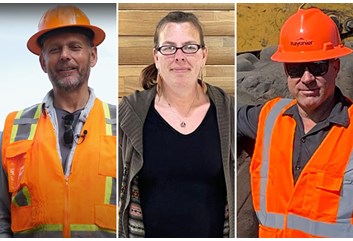


Leave a Comment